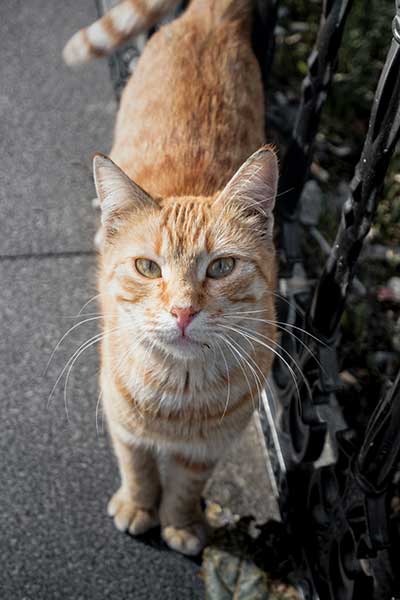Cats are fascinating creatures, known for their mysterious behaviors and unique features. Among these features, whiskers stand out as remarkable tools that help our feline friends navigate their world. But did you know that whiskers, also known as vibrissae, can experience fatigue? Let’s dive in to what it is, what it’s caused by and how you may be able to help.
The Marvelous World of Whiskers:
Whiskers are not just fuzzy adornments on a cat’s face; they’re finely-tuned sensors connected to a cat’s nervous system. These specialized hairs are strategically placed on both sides of a cat’s face, on the back of their legs, and even above their eyes. Whiskers are more than just cute accessories; they play a crucial role in a cat’s daily life.
Whiskers act as a cat’s built-in radar system. They’re highly sensitive touch receptors that help cats detect changes in air currents, navigate in low-light conditions, and even understand the size of openings. The connection between a cat’s whiskers and its nervous system is like having a superpower for exploring the world. Basically a 6th sense so to speak.
Whisker Fatigue: What Is It?
Imagine if you had to wear headphones all the time, and the constant pressure on your ears started to bother you. That’s a bit like what whisker fatigue is for our cats. Whisker fatigue occurs when a cat’s sensitive whiskers become overworked or stressed due to constant stimulation. Think of it as information overload for our feline friends.
Common situations that can lead to whisker fatigue include eating from narrow or deep food bowls, or squeezing into tight spaces where their whiskers make constant contact with the surroundings. The stress caused by these scenarios can result in discomfort and impact a cat’s behavior.
Signs of Whisker Fatigue:
- Fussiness with Food Bowls: If you notice your cat avoiding a particular food bowl or leaving food around the edges, it might be experiencing whisker fatigue. The constant brushing of their whiskers against the bowl’s sides can be overwhelming.
- Avoidance of Tight Spaces: Cats love exploring nooks and crannies, but if your cat starts avoiding tight spaces, it could be a sign of whisker fatigue. The discomfort from repeated whisker contact may make them hesitant to venture into confined areas.
- Behavioral Changes: Whisker fatigue can lead to subtle changes in behavior. Your cat might become more restless, irritable, or show signs of general It’s important to pay attention to these sutble shifts to help identify sensory stress. You know your cat best, so only you might be able to pick up on these cues.
Relieving Whisker Fatigue
Understanding whisker fatigue is the first step, and the good news is there are simple ways to give your cat relief. Here are some practical tips to make your cat’s world more comfortable:
- Switch to Wide, Shallow Bowls: Trade in deep food and water bowls for wider, shallower options. This adjustment allows your cat to eat and drink without their whiskers constantly touching the sides, reducing sensory stress during mealtime.
- Create Open Spaces: Cats love room to roam. Ensure your living space provides open areas for your cat to move around freely. Avoid placing objects too close together, giving your cat space to explore without constantly stimulating its whiskers.
- Gentle Grooming Sessions: When grooming your cat, be gentle with their whiskers. Use soft strokes, avoiding any tugging or pulling. This not only keeps your cat comfortable but also preserves the sensitivity of their whiskers.
- Comfortable Resting Spots: Cats enjoy cozy spots for relaxation. Provide comfortable beds and resting areas where your cat can stretch out without their whiskers making contact with tight surfaces.
- Rotate Toys and Furniture: Keep your cat’s environment dynamic by rotating toys and rearranging furniture. This prevents whisker fatigue from prolonged exposure to the same stimuli, offering mental stimulation and reducing sensory stress.
